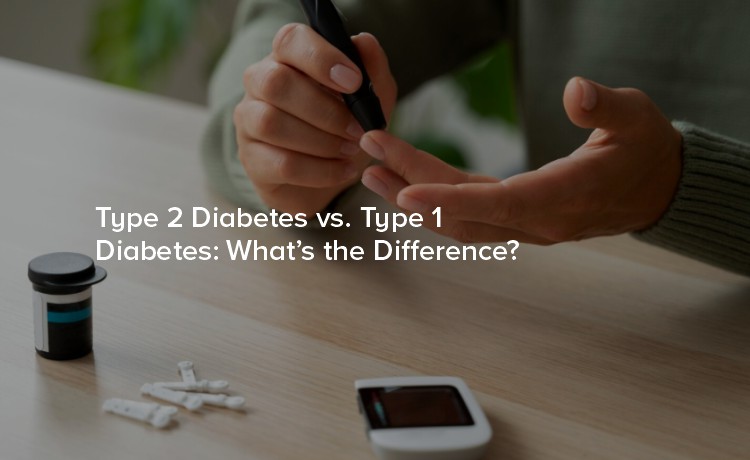
When it comes to diabetes, many people are surprised to learn it isn’t a one-size-fits-all condition. Among the most commonly discussed types are Type 1 diabetes and Type 2 diabetes. While they share the same core challenge—difficulty regulating blood sugar levels—they differ in causes, management, and who’s most likely to develop them.
Before we jump into the differences, let's quickly define diabetes. Diabetes occurs when your body struggles to regulate blood sugar (glucose), either due to a lack of insulin (the hormone that allows your cells to use sugar for energy) or because your body doesn’t use insulin effectively. Unchecked, this can lead to a host of complications, from nerve damage to vision loss.
Type 1 and Type 2 diabetes are the two primary forms of the condition, but they diverge significantly when it comes to their underlying causes and how they’re managed day to day.
1. What Causes Each Type?
Type 1 Diabetes (T1D)
Type 1 diabetes is an autoimmune condition. This means the body’s immune system mistakenly attacks the insulin-producing cells in the pancreas, leaving the person unable to produce insulin. The exact reason this happens isn’t entirely clear, but it’s believed to involve a mix of genetic factors and environmental triggers (like certain infections).
Type 1 diabetes often develops in childhood or adolescence but can occur at any age. It’s also relatively rare, accounting for about 5-10% of all diabetes cases.
Type 2 Diabetes (T2D)
Type 2 diabetes, on the other hand, is primarily a lifestyle-related condition, though genetics also play a role. It occurs when the body becomes resistant to insulin or doesn’t produce enough of it to keep blood sugar levels in check.
Unlike Type 1 diabetes, Type 2 is far more common, representing over 90% of diabetes cases worldwide. It typically develops in adults, although rising obesity rates mean more children and teenagers are being diagnosed.
2. Who Is at Risk?
Risk Factors for Type 1
Risk Factors for Type 2
3. Symptoms to Look Out For
Both types of diabetes share some overlapping symptoms, such as excessive thirst, frequent urination, and unexplained weight loss. However, the speed at which symptoms appear differs drastically.
Type 1 Diabetes Symptoms
4. How Is Each Type Managed?
Managing diabetes requires lifelong commitment, but the approaches for Type 1 and Type 2 differ significantly.
Managing Type 1 Diabetes
Since people with Type 1 diabetes can’t produce insulin, they require daily insulin injections or an insulin pump to survive. Advances in technology have introduced devices like continuous glucose monitors (CGMs), which help track blood sugar levels in real time.
There’s currently no way to prevent or cure Type 1 diabetes, so management focuses on maintaining stable blood sugar levels and preventing complications.
Managing Type 2 Diabetes
Type 2 diabetes can often be controlled through lifestyle changes, especially in its early stages. Key strategies include adopting a balanced diet, engaging in regular physical activity, and losing weight if needed.
For some, oral medications or injectable treatments (such as insulin or GLP-1 receptor agonists) may be necessary. Unlike Type 1 diabetes, many cases of Type 2 are preventable with a healthier lifestyle.
5. Can They Be Reversed or Cured?
Whether it’s Type 1 or Type 2, adopting healthy habits and staying proactive with medical care can help people with diabetes lead full, vibrant lives. Support from healthcare teams, family, and a wealth of online resources means you’re never alone in navigating your condition.
For those managing Type 1, advances in technology—from insulin pumps to continuous glucose monitors—are streamlining diabetes care. Meanwhile, for those with Type 2, small but consistent changes can result in big improvements.
Understanding the differences between Type 1 and Type 2 diabetes is an important step toward better management and prevention. If you suspect you or a loved one may have diabetes, consult a healthcare professional immediately to get tested.